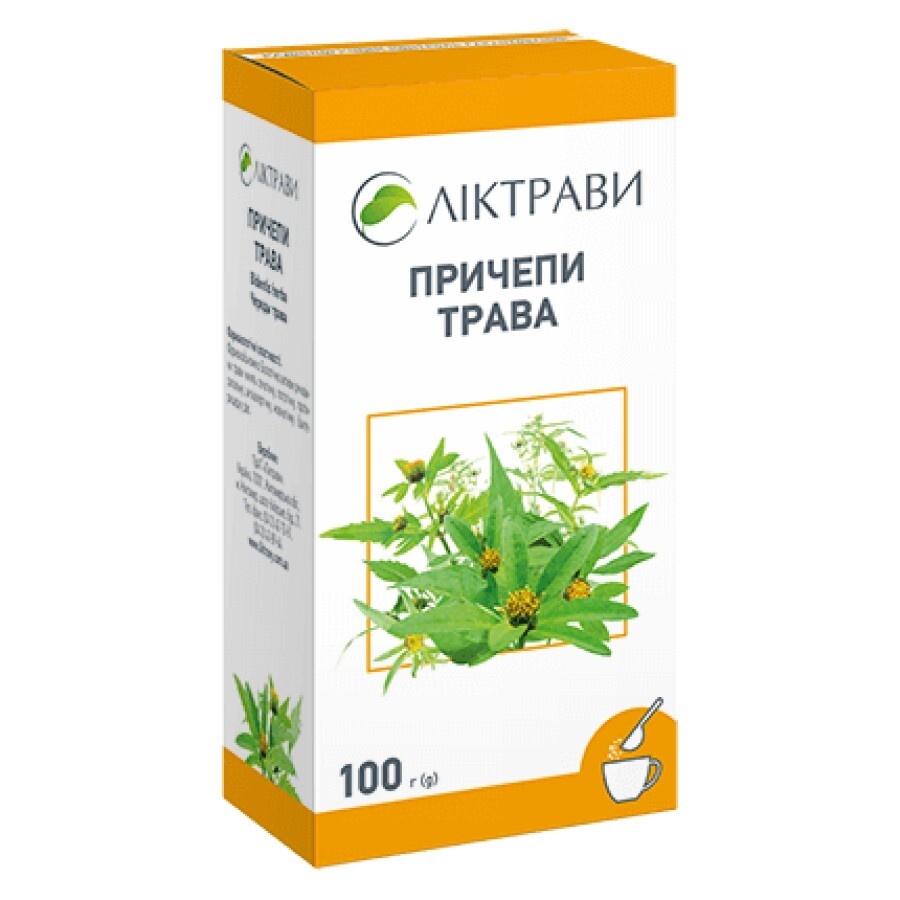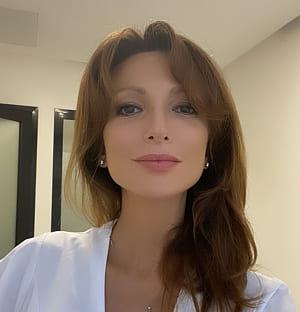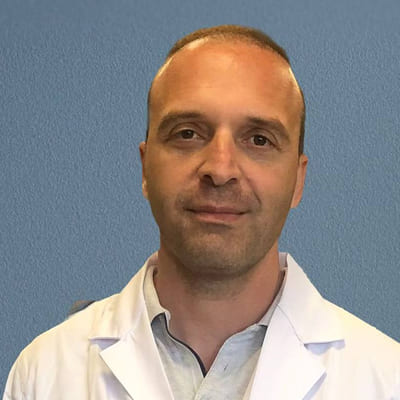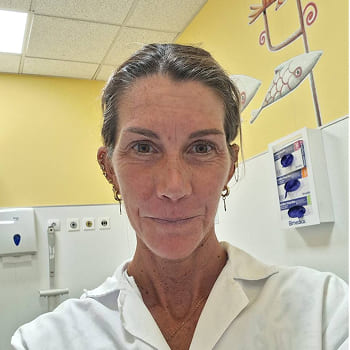

PRICEPI TRAVA

Ask a doctor about a prescription for PRICEPI TRAVA

How to use PRICEPI TRAVA
INSTRUCTIONS FOR MEDICAL USE OF THE MEDICINAL PRODUCT POLTECHNET
Poltechet (Sodium (99Mo)Molybdate, Sodium (99mTc)pertechnetate)
COMPOSITION
Active substances: Sodium (99Mo)Molybdate, Sodium (99mTc)pertechnetate; mother substance: sodium molybdate-99Mo 9.1-200 GBq; daughter substance: sodium pertechnetate-99mTc 8.0-175 GBq; excipients: sodium chloride, water for injection.
PHARMACEUTICAL FORM
Radionuclide generator. The solution of sodium pertechnetate-99mTc is clear and colorless.
MAIN PHYSICOCHEMICAL PROPERTIES
Clear colorless solution.
PHARMACOTHERAPEUTIC GROUP
Diagnostic radiopharmaceuticals. ATC Code V09 FX01.
PHARMACOLOGICAL PROPERTIES
PHARMACODYNAMICS
No pharmacological activity was observed in the range of doses used for diagnostic purposes.
PHARMACOKINETICS
Pertechnetate ions are distributed similarly to iodide and perchlorate ions, temporarily concentrating in the salivary glands, choroid plexus, stomach (mucous membrane), and thyroid gland, from which they are excreted unchanged.
Pertechnetate ions also have the ability to accumulate in areas with increased vascularization or pathological vascular permeability, especially when previous therapy with blocking agents suppresses absorption in glandular tissues. Provided that the blood-brain barrier is intact, sodium pertechnetate-99mTc does not penetrate brain tissue.
CLINICAL CHARACTERISTICS
INDICATIONS
The preparation is intended exclusively for diagnostic purposes.
The eluate from the generator (sodium pertechnetate-99mTc solution) is used for:
- labeling kits for preparing radiopharmaceuticals used in diagnostic imaging, prepared according to the labeling procedure described in the instructions accompanying these kits;
- thyroid scintigraphy: direct imaging and determination of pertechnetate accumulation in the gland, providing information on the size, position, structure, and function of the thyroid gland in pathological changes;
- salivary gland scintigraphy: diagnosis of chronic inflammation of the salivary glands (e.g., Sjögren's syndrome), as well as assessment of salivary gland function and duct patency in disorders of the salivary glands and monitoring of response to therapeutic measures (including radioiodine therapy);
- localization of ectopic gastric mucosa (Meckel's diverticulum);
- lacrimal duct scintigraphy: to assess functional disorders of tear production (after administration of a sterile solution of sodium pertechnetate-99mTc into the eye) and monitoring of response to therapeutic measures.
CONTRAINDICATIONS
Increased sensitivity to the active substance or excipients. Pregnancy, breastfeeding.
SPECIAL PRECAUTIONS
When working with sodium pertechnetate-99mTc, as with other radioactive medicinal products, it is necessary to be careful and take appropriate safety measures to minimize the risk of radiation exposure to clinical personnel and patients.
Only persons authorized to work with radiopharmaceuticals can handle them. Storage, use, transportation, and disposal of radiopharmaceutical waste are carried out in accordance with current legislation.
RADIATION DOSIMETRY
The data below are taken from ICRP 80, calculated based on the following assumptions:
| Organ | Adults | 15 years | 10 years | 5 years | 1 year |
| Adrenal glands | 0.0037 | 0.0047 | 0.0072 | 0.011 | 0.019 |
| Urinary bladder wall | 0.018 | 0.023 | 0.030 | 0.033 | 0.060 |
| Bone surface | 0.0054 | 0.0066 | 0.0097 | 0.014 | 0.026 |
| Brain | 0.0020 | 0.0025 | 0.0041 | 0.0066 | 0.012 |
| Breasts | 0.0018 | 0.0023 | 0.0034 | 0.0056 | 0.011 |
| Gallbladder | 0.0074 | 0.0099 | 0.0016 | 0.023 | 0.035 |
| Gastrointestinal tract - stomach wall - small intestine - large intestine - ascending colon wall - descending colon wall | 0.026, 0.016, 0.042, 0.057, 0.021 | 0.034, 0.020, 0.054, 0.073, 0.028 | 0.048, 0.031, 0.088, 0.120, 0.045 | 0.078, 0.047, 0.140, 0.200, 0.072 | 0.160, 0.082, 0.270, 0.380, 0.13 |
| Heart | 0.0031 | 0.0040 | 0.0061 | 0.0092 | 0.017 |
| Kidneys | 0.0050 | 0.0060 | 0.0087 | 0.013 | 0.021 |
| Liver | 0.0038 | 0.0048 | 0.0081 | 0.013 | 0.022 |
| Lungs | 0.0026 | 0.0034 | 0.0051 | 0.0079 | 0.014 |
| Muscles | 0.0032 | 0.0040 | 0.0060 | 0.0090 | 0.016 |
| Esophagus | 0.0024 | 0.0032 | 0.0047 | 0.0075 | 0.014 |
| Ovaries | 0.010 | 0.013 | 0.018 | 0.026 | 0.045 |
| Pancreas | 0.0056 | 0.0073 | 0.011 | 0.016 | 0.027 |
| Red bone marrow | 0.0036 | 0.0045 | 0.0066 | 0.0090 | 0.015 |
| Salivary glands | 0.0093 | 0.012 | 0.017 | 0.024 | 0.039 |
| Skin | 0.0018 | 0.0022 | 0.0035 | 0.0056 | 0.010 |
| Spleen | 0.0043 | 0.0054 | 0.0081 | 0.012 | 0.021 |
| Testes | 0.0028 | 0.0037 | 0.0058 | 0.0087 | 0.016 |
| Thymus | 0.0024 | 0.0032 | 0.0047 | 0.0075 | 0.014 |
| Thyroid gland | 0.022 | 0.036 | 0.055 | 0.12 | 0.22 |
| Uterus | 0.0081 | 0.010 | 0.015 | 0.022 | 0.037 |
| Other tissues | 0.0035 | 0.0043 | 0.0064 | 0.0096 | 0.017 |
| Effective dose (mSv/MBq) | 0.013 | 0.017 | 0.026 | 0.042 | 0.079 |
INSTRUCTIONS FOR PREPARATION OF THE RADIOPHARMACEUTICAL
Elution of the generator should be performed in a room that meets national safety standards for the use of radioactive products.
The solution obtained is a clear, colorless solution of sodium pertechnetate-99mTc, with a pH of 5.5 to 7.5 and a radiochemical purity of more than 98%.
The activity of the Poltechet generators corresponds to the declared activity. The nominal activity of the generator is determined at 12:00 CET on the day of calibration.
To ensure safe use of the generator, it is necessary to follow the instructions provided.
When working with the preparation during its administration, it is necessary to strictly follow the recommendations for safety in conditions of ionizing radiation exposure.
MECHANISM OF ACTION
WARNING! Due to the radiation hazard to personnel, it is recommended to perform elution of the generator and all other actions with the sodium pertechnetate-99mTc solution using additional radiation protection (e.g., 50 mm Pb screen) and in sterile conditions. In addition, syringes used for preparing radiopharmaceuticals should be lead-protected.
When working with the generator, it is necessary to follow the following sequence:
- cut the transport packaging seals;
- remove the packaging lid;
- remove the top plate;
- remove the cardboard boxes with elution kits;
- remove the generator and place it on the workplace.
WARNING:
- For elution of the generator, use only vials with eluent manufactured by the same manufacturer.
- Do not rinse needles and stoppers with ethyl alcohol or soap solution, as this may affect the elution process.
- Do not leave the generator unused. The amount of 99mTc will increase in the generator and will be released if the generator is not used daily. If the eluate is used after a period of non-use of the generator, 99mTc and 99Tc will react with the ligand of the kit, but 99Tc will not add clarity to the image. This will negatively affect the quality of the image.
Elution of the generator should be performed in the following sequence:
- unscrew the generator cap;
- position the generator so that the vials with bacteriostatic agent in the generator nests are parallel to the operator, and the volume regulator setting is clearly visible;
- remove the two vials with bacteriostatic agent from the needles;
- set the volume regulator plug to the desired eluate volume position;
- break off the middle part of the vial cap from the eluent vial and vacuum vial;
- place the vacuum vial in the eluate protection container;
- place the eluent vial on the double needle in the generator nest. Make a puncture so that the vial touches the bottom of the nest;
- place the vacuum vial in a lead container and put it on a single needle. Gently press the vial to make a puncture so that the needle reaches the bottom of the vial;
- now the elution process has started. The elution time depends on the eluate volume and takes approximately 2, 3, or 4 minutes to obtain an eluate volume of 4, 6, and 8 ml, respectively;
- when the elution process is complete, remove the lead container with the eluate vial and check the extracted 99mTc activity;
- remove the empty eluate vial from the double needle;
- close the generator needles with vials containing bacteriostatic agent;
- screw on the generator cap.
CALCULATION OF 99mTc ACTIVITY
The nominal activity of the 99Mo/99mTc radionuclide generator (MTcG-4) is expressed as the activity of 99mTc at 12:00 on the day of calibration (day 0, Table 3).
| Time after previous elution [hours] | 0 | 2 | 4 | 6 | 8 | 10 | 12 | 14 | 16 | 18 | 20 | 23 |
| 99Mo decay factor | 1.0 | 0.979 | 0.960 | 0.940 | 0.919 | 0.900 | 0.881 | 0.863 | 0.845 | 0.828 | 0.811 | 0.785 |
| 99mTc growth factor | 0.0 | 0.21 | 0.39 | 0.51 | 0.62 | 0.71 | 0.79 | 0.85 | 0.89 | 0.93 | 0.96 | 1.0 |
QUALITY CONTROL
Purity of the solution, pH, radioactivity, and molybdenum breakthrough (99Mo) should be checked before use.
The first eluate obtained from this generator can be used in the usual way, unless otherwise specified. The eluate can be used for labeling a kit, even if it is eluted 24 hours after the last elution, unless the Instructions for Preparation of the Radiopharmaceutical (see above) for the relevant kit specify that fresh eluate should be used.
PROPERTIES OF THE ELUATE FROM THE GENERATOR
Radioactivity/yield of elution 90–110%
Radiochemical purity of the eluate ≥ 98%
Content of 99Mo in the eluate ≤ 0.1% (A/A)
Content of Al3+ in the eluate < 5 μg/ml
pH of the eluate 5.5–7.5
USER-LEVEL CONTROL
Measurements of activity should be performed using an optimal method that provides an accuracy of 10% from the end time of elution.
Radiochemical purity should be determined using ascending paper chromatography with Whatman 1MM chromatography paper and an acetone solution for development.
The Rf value for the sodium pertechnetate-99mTc spot is 0.9–1.0.
Determination of aluminum content in the eluate is performed using a colorimetric method on a chromatography paper strip soaked with 0.05% chromazurol S solution.
INTERACTIONS WITH OTHER MEDICINAL PRODUCTS AND OTHER TYPES OF INTERACTIONS
Atropine, isoprenaline, and analgesics may cause delayed emptying of the stomach and thus alter the distribution of sodium pertechnetate-99mTc on imaging of abdominal organs.
Hormones of the thyroid gland, iodine, iodide, perchlorate, thiocyanate, antacids containing aluminum, sulfonamides, and preparations containing tin (II) ions may lead to increased concentrations of sodium pertechnetate-99mTc in the blood vessels; tin (II) ions and sulfonamides may increase the concentration of sodium pertechnetate-99mTc in erythrocytes and decrease its accumulation in plasma, causing brain damage. Administration of such preparations should be discontinued a few days before the procedure.
Iodine-containing radiological contrast and perchlorate may reduce the uptake of sodium pertechnetate-99mTc by the gastric mucosa. Barium sulfate absorbs most of the gamma radiation of the preparation. Therefore, scintigraphy of Meckel's diverticulum should not be performed earlier than 2-3 days after the administration of these substances. Laxatives may increase the passage of sodium pertechnetate-99mTc from the stomach to the intestine, so they should not be used before scintigraphy of Meckel's diverticulum.
SPECIAL PRECAUTIONS FOR USE
It is possible to develop increased sensitivity or anaphylactic reactions.
In the event of increased sensitivity or anaphylactic reactions, the use of the medicinal product should be discontinued immediately, and if necessary, intravenous treatment should be started. To provide timely assistance in emergency situations, it is necessary to prepare the necessary medicinal products and equipment in advance, such as an intubation tube and a ventilator.
Justification of individual risks/benefits
For each patient, radiation exposure should be justified by the potential benefit. The dose of radioactivity should be as low as possible to obtain the necessary diagnostic information.
Kidney failure, liver failure
For such patients, the ratio of risks/benefits should be carefully weighed, as increased radiation exposure is possible.
Concomitant use of sodium perchlorate is associated with reduced uptake of radioactivity by glandular tissues.
Children
The preparation should be prescribed with caution, as the effective dose in MBq is higher than for adults.
In addition to thyroid scintigraphy, thyroid blockade is very important for children.
Patient preparation
In some cases, it is necessary to administer medicinal products to patients for thyroid blockade.
The patient should drink plenty of fluids before the start of the examination and urinate as often as possible during the first hours after the study to reduce radiation exposure.
To prevent false-positive results or to reduce radiation exposure by reducing the accumulation of sodium pertechnetate-99mTc in the thyroid and salivary glands, a thyroid-blocking agent should be used before scintigraphy of the lacrimal duct or Meckel's diverticulum. In the case of thyroid scintigraphy, parathyroid scintigraphy, or salivary gland scintigraphy, a thyroid-blocking agent should NOT be used.
Before administration of sodium pertechnetate-99mTc solution for scintigraphy of Meckel's diverticulum, the patient should fast for 3-4 hours to reduce intestinal peristalsis.
After in vivo labeling of erythrocytes with tin ions, sodium pertechnetate-99mTc is initially absorbed into erythrocytes, so scintigraphy of Meckel's diverticulum should be performed before or several days after in vivo labeling of erythrocytes.
After the procedure
Close contact with infants and pregnant women should be limited for 12 hours.
SPECIAL WARNINGS
The solution of sodium pertechnetate-99mTc for injection contains 3.6 mg/ml of sodium.
Depending on the time of administration of the solution, the sodium content may be higher than 1 mmol (23 mg) in some cases. This should be taken into account for patients on a low-sodium diet.
When the solution of sodium pertechnetate-99mTc is used for labeling a kit, the total sodium content should be considered, including both the eluate and the kit. Please refer to the kit instructions.
For salivary gland scintigraphy, lower accuracy can be expected compared to magnetic resonance sialography.
USE DURING PREGNANCY OR BREASTFEEDING
Women of childbearing age
When using radiopharmaceuticals in women of childbearing age, it is essential to determine whether the woman is pregnant or not. Any woman with a delayed menstrual period should be considered pregnant unless proven otherwise. If there are doubts about possible pregnancy (e.g., when a woman has a delay but an irregular cycle, etc.), the patient should be offered alternative diagnostic methods (if available) without the use of ionizing radiation.
Pregnancy
The use of sodium pertechnetate-99mTc in pregnant women should be justified by medical necessity and a positive individual risk-benefit assessment for the mother and fetus. Alternative diagnostic methods without radiation exposure should be considered.
99mTc (as free pertechnetate) has shown the ability to penetrate the placental barrier.
Breastfeeding
Before administering radiopharmaceuticals to breastfeeding women, it is necessary to consider the possibility of postponing the administration of radionuclides until the end of breastfeeding and carefully select radiopharmaceuticals, taking into account the excretion of radioactivity in breast milk. If the use of the preparation is necessary, breastfeeding should be discontinued for 12 hours after the study, and the expressed milk should be discarded.
Close contact with infants should be limited during this time.
ABILITY TO INFLUENCE THE SPEED OF REACTION WHEN DRIVING VEHICLES OR OPERATING MACHINERY
Studies have not been conducted.
METHOD OF ADMINISTRATION AND DOSAGE
DOSAGE
If sodium pertechnetate-99mTc is administered intravenously, the activity can vary widely, depending on the volume of clinical information required and the equipment used. Administration of a dose of radioactivity exceeding local diagnostic reference levels (DRLs) should be justified for specific purposes.
Recommended activity doses
Adults (70 kg) and elderly patients
- Thyroid scintigraphy: 20-80 MBq.
- Salivary gland scintigraphy: 30-150 MBq for static images and up to 370 MBq for dynamic images.
- Meckel's diverticulum scintigraphy: 300-400 MBq.
- Lacrimal duct scintigraphy: 2-4 MBq per 1 drop in each eye.
Patients with renal failure
The dose of activity should be carefully selected, as increased radiation exposure is possible in such patients.
Children
Administration to children should be justified by clinical necessity, taking into account the risk-benefit ratio for this group of patients.
The level of activity administered to children should be in accordance with the recommendations of the pediatric activity dosage chart used in children, as recommended by the European Association of Nuclear Medicine (EANM), and can be calculated by multiplying the base activity (for calculation purposes) by a body weight correction factor, as shown in Table 5.
A [MBq] dosage = base activity × correction factor
Thyroid scintigraphy. Activity dose [MBq] = 5.6 MBq × correction factor (Table 5). A minimum activity of 10 MBq is required to obtain images of sufficient quality.
Detection/localization of ectopic gastric mucosa. Activity dose [MBq] = 10.5 MBq × correction factor (Table 5). A minimum activity of 20 MBq is required to obtain images of sufficient quality.
| Body weight (kg) | Correction factor | Body weight (kg) | Correction factor | Body weight (kg) | Correction factor |
| 3 | 1 | 22 | 5.29 | 42 | 9.14 |
| 4 | 1.14 | 24 | 5.71 | 44 | 9.57 |
| 6 | 1.71 | 26 | 6.14 | 46 | 10.00 |
| 8 | 2.14 | 28 | 6.43 | 48 | 10.29 |
| 10 | 2.71 | 30 | 6.86 | 50 | 10.71 |
| 12 | 3.14 | 32 | 7.29 | 52-54 | 11.29 |
| 14 | 3.57 | 34 | 7.72 | 56-58 | 12.00 |
| 16 | 4.00 | 36 | 8.00 | 60-62 | 12.71 |
| 18 | 4.43 | 38 | 8.43 | 64-66 | 13.43 |
| 20 | 4.86 | 40 | 8.86 | 68 | 14.00 |
Salivary gland scintigraphy. The EANM pediatric target group (1990) recommends calculating the activity administered to the child based on body weight (see Table 6), with a minimum dose of 10 MBq required to obtain images of sufficient quality.
| Body weight (kg) | Correction factor | Body weight (kg) | Correction factor | Body weight (kg) | Correction factor |
| 3 | 0.1 | 22 | 0.50 | 42 | 0.78 |
| 4 | 0.14 | 24 | 0.53 | 44 | 0.80 |
| 6 | 0.19 | 26 | 0.56 | 46 | 0.82 |
| 8 | 0.23 | 28 | 0.58 | 48 | 0.85 |
| 10 | 0.27 | 30 | 0.62 | 50 | 0.88 |
| 12 | 0.32 | 32 | 0.65 | 52-54 | 0.90 |
| 14 | 0.36 | 34 | 0.68 | 56-58 | 0.92 |
| 16 | 0.40 | 36 | 0.71 | 60-62 | 0.96 |
| 18 | 0.44 | 38 | 0.73 | 64-66 | 0.98 |
| 20 | 0.46 | 40 | 0.76 | 68 | 0.99 |
Lacrimal duct scintigraphy. The recommended activity doses are the same for both adults and children.
METHOD OF ADMINISTRATION
For intravenous or ophthalmic use.
For multiple use.
For thyroid scintigraphy, salivary gland scintigraphy, and detection/localization of ectopic gastric mucosa, the solution of sodium pertechnetate-99mTc is administered as an intravenous injection.
For lacrimal duct scintigraphy, the preparation is instilled into each eye (ophthalmic use).
Image acquisition
Thyroid scintigraphy: 20 minutes after intravenous administration.
Salivary gland scintigraphy: immediately after intravenous administration and at equal intervals of 15 minutes.
Detection/localization of ectopic gastric mucosa (Meckel's diverticulum): immediately after intravenous administration and at equal intervals of 30 minutes.
Lacrimal duct scintigraphy: dynamic study 2 minutes after instillation, followed by static images at equal intervals of 20 minutes.
OVERDOSAGE
In the event of radiation overdosage with sodium pertechnetate-99mTc, the absorbed dose should be reduced as much as possible by removing radionuclides from the body through defecation, forced diuresis, and frequent emptying of the bladder.
Accumulation in the thyroid gland, salivary glands, and gastric mucosa can be significantly reduced if sodium perchlorate is administered immediately after accidental overdosage with sodium pertechnetate-99mTc.
UNDERTAKES REACTIONS
Results of safety studies of the preparation
Information on adverse reactions is obtained from voluntary reports. Reports have been received of such types of reactions as anaphylactic, vegetative, as well as various local reactions to the preparation. Poltechet is used for radioactive labeling of certain individual preparations that usually cause more side effects than sodium pertechnetate-99mTc. Therefore, known side effects when administering preparations labeled with sodium pertechnetate-99mTc will depend on the specific preparation used. This information can be found in the summary of product characteristics of the radiopharmaceutical used.
Comprehensive list of adverse reactions
Frequency of adverse reactions:
unknown (cannot be estimated from available data).
Immune system disorders
Frequency unknown*: anaphylactoid reactions (e.g., respiratory arrest, coma, urticaria, erythema, rash, itching, edema in various parts of the body, including facial edema).
Nervous system disorders
Frequency unknown*: vasovagal reactions (e.g., loss of consciousness, tachycardia, dizziness, headache, visual impairment, hyperemia).
Gastrointestinal disorders
Frequency unknown*: vomiting, nausea, diarrhea.
General disorders and administration site conditions
Frequency unknown*: reactions at the injection site due to extravasation (e.g., inflammation, pain, erythema, swelling).
* Adverse reactions for which information was obtained from voluntary reports.
SHELF LIFE
Generator – 21 days from the date of manufacture.
Pertechnetate – 12 hours after elution.
Elution vials – 1 year.
STORAGE CONDITIONS
Store in the original packaging at a temperature not exceeding 30°C. Do not freeze.
INCOMPATIBILITIES
Do not mix in the same container with other medicinal products.
PACKAGING
Radionuclide generator; 8.0–175 GBq; in batches of 6 GBq or 8 GBq, or 12 GBq, or 15 GBq in a 10 ml vial, No. 1, in packaging with an elution kit (consisting of two cardboard boxes: one containing 16 vials with 10 ml of eluent (0.9% NaCl solution), and the other containing 16 vacuum vials for eluate) and a transport container.
Poltechet, radionuclide generator, consists of the following components:
- sterile glass column of the generator, filled with aluminum oxide, on which molybdenum-99 is adsorbed (separation). The lower end of the column has a glass filter to prevent aluminum oxide from escaping from the column. The upper and lower ends of the column are closed with rubber stoppers and caps;
- set of stainless steel needles connecting the generator column to the eluent vial and elution vials; during transportation and between elutions, the needles are protected by vials with bacteriostatic agent (0.02% aqueous solution of lauryldimethylbenzyl ammonium bromide);
- column and needles are located inside a lead shield with a wall thickness of 50 mm, which provides protection for personnel from radiation and allows easy handling of the generator;
- filters: eluate and air filter;
- volume regulator. The design of this device allows for obtaining the required volume of eluate (by changing the volume of eluate from 4 to 8 ml). The accuracy of volume adjustment is 0.5 ml. This allows for obtaining the desired radioactive concentration of 99mTc in the solution. Volume adjustment is performed by rotating the regulator plug so that the arrow aligns with the number of milliliters of eluate on the upper surface of the plug.
Along with the radionuclide generator, elution kits are supplied in cardboard boxes:
- 16 vials with 10 ml of eluent (0.9% NaCl solution) and 16 vacuum vials (eluate vials).
The glass vial is the primary packaging for the eluate from the generator. The 10 ml vial is closed with a rubber stopper and an aluminum cap and placed in a lead container.
Typical release forms:
| 99mTc activity [GBq] on the date of manufacture | 8.0 | 14 | 21 | 28 | 35 | 42 | 53 | 64 | 69 | 88 | 125 | 141 | 175 | GBq |
| 99mTc activity (maximum theoretical activity of elution on the date of calibration, 12:00 CET) | 2.3 | 4.0 | 6.0 | 8.0 | 10 | 12 | 15 | 18 | 20 | 25 | 35 | 40 | 50 | GBq |
| 99Mo activity (on the date of calibration, 12:00 CET) | 2.6 | 4.5 | 6.8 | 9.2 | 11 | 14 | 17 | 21 | 22 | 29 | 41 | 46 | 57 | GBq |
At the request of the customer, it is possible to provide other sizes within the range of 8.0-175 GBq as of the date of manufacture.
RELEASE CATEGORY
Radionuclide generators are supplied only to specialized medical institutions that have a permit for working with radiopharmaceuticals.
MANUFACTURER/APPLICANT
National Center for Nuclear Research.
MANUFACTURER'S LOCATION AND ADDRESS OF BUSINESS/ APPLICANT'S LOCATION
Andrzeja Sołtana 7, Otwock, 05-400, Poland.
- Country of registration
- Prescription requiredNo
- Manufacturer
- This information is for reference only and does not constitute medical advice. Always consult a licensed doctor before taking any medication. Oladoctor is not responsible for medical decisions based on this content.
- Alternatives to PRICEPI TRAVADosage form: solution, 2% in 60 ml bottleActive substance: minoxidilPrescription not requiredDosage form: solution, 5% in 60 ml bottleActive substance: minoxidilPrescription not requiredDosage form: solution, 2% in 60ml bottleActive substance: minoxidilManufacturer: Індастріал Фармасеутіка Кантабріа, С.А.Prescription not required
Alternatives to PRICEPI TRAVA in other countries
The best alternatives with the same active ingredient and therapeutic effect.
Alternative to PRICEPI TRAVA in Hiszpania
Alternative to PRICEPI TRAVA in Polska
Online doctors for PRICEPI TRAVA
Discuss dosage, side effects, interactions, contraindications, and prescription renewal for PRICEPI TRAVA – subject to medical assessment and local rules.














